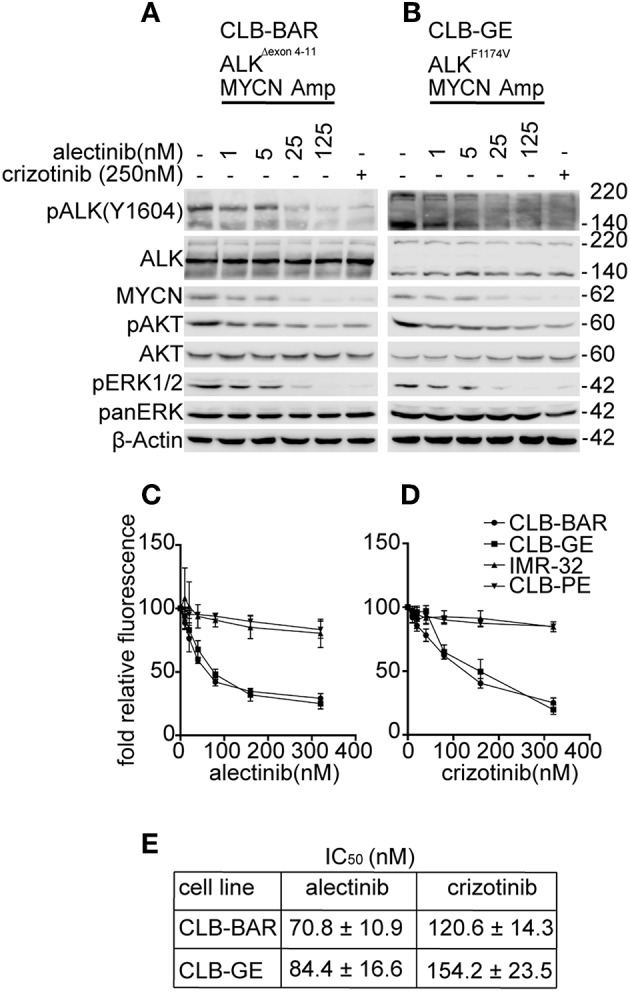Figure 1.

Alectinib inhibits signaling in ALK addicted neuroblastoma cell lines. (A,B) ALK addicted cell lines, CLB-BAR (amplified MYCN/ALK, ALKΔexon 4-11), and CLB-GE (amplified MYCN/ALK, ALK-F1174V) were treated with alectinib at the concentrations indicated for 6 h and lysate immunoblotted for pALK-Y1604 and the ALK downstream targets ERK1/2, AKT, and MYCN. Crizotinib (250 nM) was used as a positive control. ALK runs at approximately 170 kDa in CLB-BAR cells due to a genomic deletion in ALK between exon 4-11 (22, 48). In CLB-GE cells, the mutant full-length ALK-F1174V mutant is cleaved and is detected as two bands. (C,D) CLB-PE and IMR-32 harbor a wildtype ALK and are ALK-wt and non-ALK addicted neuroblastoma cell lines. All four neuroblastoma cell lines were grown in increasing concentrations of either alectinib (C) or crizotinib (D) for 72 h after which cell viability was monitored by resazurin assay (Sigma, Sweden). Mean ± SD values were plotted from three independent experiments, performed in triplicate. (E) IC50 values from the cell viability analysis in C and D were generated in GraphPad Prism 7.0. The results were analyzed as log (inhibitor) vs. normalized response and are expressed as mean ± SD.
